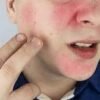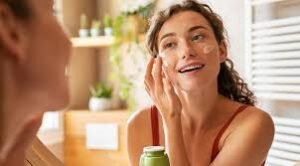Traffic Pollution’s Influence on Hair Health
In bustling urban environments, Traffic Pollution’s is an unavoidable reality that affects not only the air we breathe but also our overall health, including the health of our hair. As vehicles emit exhaust gases and particulate matter into the atmosphere, these pollutants can settle on our hair and scalp, leading to a range of adverse effects. This article explores the impact of traffic pollution on hair health, examining the sources of pollutants, their effects on hair and scalp, and practical tips to mitigate their impact for healthier, more resilient hair.

Understanding Traffic Pollution and Its Sources
Traffic pollution primarily consists of exhaust emissions from vehicles, which include:
- Particulate Matter (PM): Fine particles suspended in the air, such as PM2.5 and PM10, which can settle on the scalp and hair follicles.
- Nitrogen Oxides (NOx): Gases emitted from vehicle engines, which contribute to air pollution and can react with sunlight to form harmful compounds.
- Volatile Organic Compounds (VOCs): Released from vehicle fuels and emissions, these compounds can contribute to air quality degradation and potentially affect hair health.
Effects of Traffic Pollution on Hair and Scalp
1. Dryness and Dehydration
Pollutants from traffic emissions can strip the scalp and hair of natural oils, leading to dryness, brittleness, and increased susceptibility to breakage. Traffic Pollution’s This can result in dull, lackluster hair that lacks shine and vitality.
2. Scalp Irritation and Sensitivity
Exposure to pollutants like PM and NOx can irritate the scalp, causing itching, redness, and inflammation. Individuals with sensitive skin or existing scalp conditions may experience exacerbated symptoms, leading to discomfort and compromised scalp health.
3. Hair Damage and Premature Aging
Traffic pollutants can weaken hair fibers and reduce elasticity, making hair more prone to split ends, breakage, and premature aging. Prolonged exposure to pollutants can accelerate hair thinning and contribute to overall hair loss over time.
Practical Tips to Mitigate the Impact of Traffic Pollution
1. Protective Hairstyles
Wearing hats, scarves, or headwraps can provide a physical barrier between hair and pollutants, reducing direct exposure to traffic emissions. This can help minimize the deposition of pollutants on hair and scalp.
2. Regular Cleansing
Frequent washing with a gentle shampoo helps remove pollutants, dirt, and impurities from the hair and scalp. Choose a sulfate-free shampoo that effectively cleanses without stripping away natural oils, and follow with a nourishing conditioner to restore moisture balance.
3. Antioxidant Protection
Incorporate hair care products enriched with antioxidants such as vitamin E, green tea extract, or argan oil. These antioxidants help neutralize free radicals generated by traffic pollutants, reducing oxidative stress and protecting hair from damage.
4. Scalp Massage and Exfoliation
Traffic Pollution’s Promote scalp circulation and remove buildup by gently massaging the scalp during shampooing. Use a scalp scrub or exfoliating treatment once a week to eliminate dead skin cells, product residue, and pollutants that can clog follicles and contribute to scalp irritation.
5. Hydration and Nutrition
Maintain overall hair health by staying hydrated and consuming a balanced diet rich in vitamins, minerals, and omega-3 fatty acids. Adequate hydration supports hair moisture retention, Traffic Pollution’s while nutrient-rich foods promote hair strength and resilience against environmental stressors.
6. Avoidance of Peak Traffic Times
Minimize outdoor exposure during peak traffic hours to reduce direct contact with vehicle emissions. Traffic Pollution’s Plan outdoor activities during off-peak times or in less congested areas to lower exposure to traffic pollution.
Hidden Dangers of Pollution in Hair Products
Conclusion
Traffic pollution poses significant challenges to hair health, impacting both the appearance and condition of hair and scalp. By understanding the sources and effects of traffic pollutants, and implementing proactive hair care practices such as protective hairstyles, regular cleansing, antioxidant protection, scalp massage, hydration, and nutritional support, individuals can mitigate the damaging effects of traffic pollution on their hair. With consistent care and attention, it is possible to maintain healthy, resilient hair that withstands the challenges posed by urban traffic environments.







Leave a reply